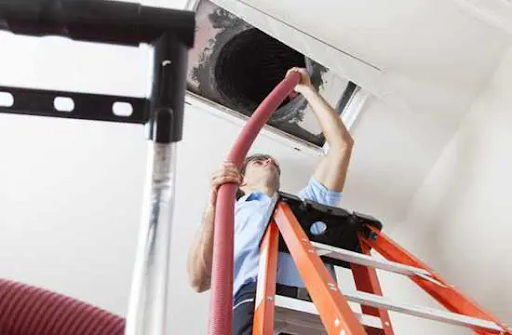A Complete Guide to MCCB Circuit Breakers and Their Applications
Electrical safety and power management are critical today, where homes, businesses, and industries rely heavily on a consistent and safe electricity supply. Among the many devices that ensure electrical protection, MCCB circuit breakers hold a prominent place. They are widely used in medium- and large-scale applications, providing reliable protection against overloads, short circuits, and faults. Understanding how MCCBs work, their features, and their applications is vital for anyone involved in electrical installations and maintenance.
This guide explores MCCB circuit breakers in detail, including their design, working mechanism, features, benefits, and common applications, with a special focus on the 63 Amp MCCB, which is one of the most commonly used variants in electrical systems.

What Are MCCB Circuit Breakers?
MCCB stands for Molded Case Circuit Breaker. Unlike traditional fuses or smaller circuit breakers, MCCB circuit breakers are designed to handle higher current levels and are suitable for a broad range of applications. They are protective devices that automatically disconnect power during abnormal conditions such as excessive current flow, short circuits, or system faults.
MCCBs are characterized by their molded case, which provides insulation and mechanical strength. This design not only ensures durability but also protects users and equipment from potential hazards. With adjustable trip settings, MCCBs offer flexibility, making them adaptable to various load requirements.
Key Features of MCCB Circuit Breakers
- High Current Capacity – MCCBs can manage a wide range of current ratings, from as low as 10 Amps to as high as 2500 Amps. This makes them suitable for different applications, from residential to industrial power distribution.
- Adjustable Trip Settings – Unlike simple circuit breakers, MCCBs often come with adjustable trip mechanisms, allowing users to set the device according to the specific load requirements.
- Four-Pole Protection – Many MCCBs, including the 63 Amp MCCB, are available in four-pole configurations, providing complete isolation for three-phase systems with a neutral line.
- Durability – Built with strong molded cases, MCCBs are designed to withstand harsh conditions and heavy usage over long periods.
- Versatile Application – They can be used for overload protection, short circuit protection, and even as a manual disconnection device.
How MCCB Circuit Breakers Work
MCCBs function by monitoring the flow of current in a circuit. If the current exceeds the rated capacity or if there is a sudden spike (indicative of a short circuit), the MCCB automatically trips to interrupt the flow of electricity.
The tripping mechanism can be either thermal, magnetic, or electronic:
- Thermal Tripping – Uses a bimetallic strip that bends under excess heat generated by high current, causing the MCCB to trip.
- Magnetic Tripping – Uses an electromagnet that activates instantaneously during a short circuit.
- Electronic Tripping – Employs advanced sensors and microprocessors for precise control, often used in large industrial setups.
This combination of mechanisms ensures both delayed and instantaneous protection depending on the type of fault detected.
Why Choose a 63 Amp MCCB?
The 63 Amp MCCB is one of the most commonly used types because it provides an ideal balance of protection and versatility. It is suitable for small to medium power distribution systems, particularly in commercial buildings, small industries, and residential complexes.
- Medium Load Handling – With a 63 Amp rating, this MCCB is capable of managing circuits with moderate current demands.
- Four-Pole Safety – The 4-pole version ensures safety across all three phases and neutral, making it ideal for balanced three-phase loads.
- Reliable Protection – Offers consistent performance against overloads and short circuits, ensuring equipment and personnel safety.
- Easy Maintenance – MCCBs like the 63 Amp variant are relatively easy to maintain and reset after tripping compared to traditional fuses.
Applications of MCCB Circuit Breakers
MCCBs are used in a wide variety of electrical systems due to their flexibility and reliability. Common applications include:
1. Industrial Installations
Factories and manufacturing units require protection for heavy machinery, motors, and equipment. MCCBs are used to safeguard these systems against faults that can lead to costly downtime or damage.
2. Commercial Buildings
Offices, shopping malls, and hotels use MCCBs for reliable power distribution and to protect electrical systems from overloads caused by multiple devices running simultaneously.
3. Residential Complexes
While smaller MCBs are often used in homes, MCCBs such as the 63 Amp MCCB are applied in larger residential complexes where higher loads are common.
4. Power Distribution Networks
In power distribution systems, MCCBs play a crucial role in segmenting circuits and ensuring localized protection without affecting the entire network.
5. Renewable Energy Systems
Solar and wind power systems use MCCBs to protect against sudden surges or faults, ensuring consistent energy flow and safety.
Benefits of Using MCCB Circuit Breakers
- Enhanced Safety – MCCBs prevent accidents by disconnecting circuits during overloads and faults.
- Reliability – They offer dependable operation and can endure high electrical stress.
- Flexibility – Adjustable settings allow customization for specific applications.
- Reduced Downtime – Easy reset features minimize downtime compared to replacing fuses.
- Cost-Effective Protection – MCCBs protect valuable electrical equipment from damage, reducing long-term maintenance and replacement costs.

MCCB vs. MCB: Understanding the Difference
Although both MCBs (Miniature Circuit Breakers) and MCCBs serve as protective devices, they differ significantly in their applications.
- Current Capacity – MCBs are typically used for currents up to 100 Amps, while MCCBs can handle up to 2500 Amps.
- Applications – MCBs are common in households and small offices, whereas MCCB circuit breakers are used in commercial and industrial setups.
- Adjustability – MCBs have fixed ratings, while MCCBs come with adjustable trip settings for greater flexibility.
This makes MCCBs indispensable for larger electrical systems where higher loads and greater protection are required.
Future Trends in MCCB Technology
With the growth of smart technologies, MCCBs are also evolving. Modern designs include digital monitoring systems, IoT integration, and advanced fault detection to improve energy management and predictive maintenance. The ability to integrate MCCBs into building management systems (BMS) is making them smarter, safer, and more efficient.
Conclusion
MCCB circuit breakers are essential components in modern electrical systems, offering unmatched protection, reliability, and flexibility. Among them, the 63 Amp MCCB is particularly valued for its ability to handle medium loads effectively, making it suitable for a wide range of residential, commercial, and industrial applications. As technology advances, MCCBs are becoming even more efficient and user-friendly, ensuring safer power distribution for future needs.
For top-quality MCCB solutions and expert guidance in electrical automation, Lauritz Knudsen Electrical and Automation provides reliable products and services that meet global safety and performance standards.



